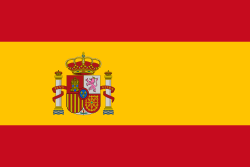Cycle Usage Statistics in Italy: Trends & Data

How does Italy stack up in cycling compared to other European countries? The growth of the bicycle market in Italy is key to understanding urban mobility and active travel. Cities like Copenhagen and Amsterdam lead with cycling making up 49% and 35% of trips, respectively. In contrast, Rome only had 0.6% cycling in 20121. What drives these differences, and how can Italy boost its cycling?
Key Takeaways
Italy's cycling market has experienced an 18% increase in ridershipbetween 2019 and 20232.
Cycling is linked to a 26% lower risk of heart disease and obesity, showing its health perks2.
Switching car rides for bikes can cut an individual's carbon footprint by half a ton yearly2.
The Netherlands tops Europe in cycling, with 41% using bikes or scooters for transport3.
Copenhagen and Amsterdam lead EU capitals in cycling, with 49% and 35% of trips by bike3.
Bicycle Market Overview in Italy
The Italian bicycle market has seen steady growth, with more people choosing cycling for transport 4 as they learn how to get into cycling and embrace its numerous benefits. From 2007 to 2014, the EU saw a rise in cycling as a daily transport mode from 1% to 3%4.
Key Statistics and Demographics
But, there's a worrying trend. Fewer children now walk or cycle to school, dropping from 82% to 14% in 30 years4. This decline among the young is a global issue that needs action.
E-bikes are gaining popularity in Italy, expected to jump from USD 0.88 Billion in 2024 to USD 1.25 Billion by 20294. Pedal Assisted e-bikes lead the market, while Throttle Assisted ones are growing fast4.
The top five e-bike companies in Italy hold 32.57% of the market4. These leaders include Atala SpA, DECATHLON (B-Twin), Giant Manufacturing Co. Ltd., Merida Industry Co. Ltd., and Trek Bicycle Corporation4.
Economic Impact of Cycling in Italy
Cycling boosts Italy's economy. Tourists on bikes spend £25 daily, more than car users, helping rural areas4. The bike sector's European turnover is a massive 500 billion euros, covering all supply chain revenues5.
Italy's bike production bounced back by 8.8% in 2020, showing the industry's strength5. Italy leads Europe in bicycle exports, selling 1,747,485 bikes, or 3.3 per minute5.
Italy's bike industry is mainly made up of small businesses, adding a billion euros to the economy5. Plans are in place to improve cycling infrastructure and support active and electric mobility5.
Cycling Modal Share in Major Italian Cities
Italy is working to boost cycling, but the number of trips by bike is still low in big cities. In Rome, only 0.6% of trips were by bike in 20126. Cities like Milan, Turin, and Naples also have low cycling rates6.
But, cities in the north like Bolzano and Trento are different. They have about 10-15% of trips by bike6. Still, Italy trails countries like the Netherlands and Denmark, where over 30% of trips are by bike in some areas6.
The market for shared mobility in Italy was worth over €178 million in 2022, up 38% from 2021 and more than double 2020's figure7. Now, 61% of Italian cities offer shared mobility services, a big jump from before7.
In 2022, people in Italy traveled 200 million kilometers on bikes, scooters, mopeds, and cars, up 41% from the year before7. Most of these trips, 87%, were on bikes, scooters, and mopeds, with 16 new services starting in 20227.
Even though cycling is still not common in Italy's big cities, shared mobility and micromobility are getting more popular8. To see more people cycling, Italy needs to improve its bike paths, deal with the terrain, and fix public transit issues caused by the COVID-19 pandemic6.
Trends in Bicycle Ridership and Usage Patterns
Recent data shows a mixed picture of bike ridership in Italy and bicycle riders in italy. Some cities have seen growth, while others have seen a decline in bike usage patterns In Italy 9.
A report from January 16, 2024, found that bicycle ridership data Italy stayed the same from 2022 to 2023. There was a 1% increase on weekdays and a 1% decrease on weekends in 14 countries9. But, since 2019, countries like Belgium, France, the UK, Italy, and Spain have seen big increases, from 13% to 34%9.
Year-over-Year Growth Rates
The growth in bike ridership in Italy varies by region and city. Some areas have seen big growth, while others have seen little or a decline9. For example, Poland, Italy, and France have seen big increases, from +34% in France to +12% in Sweden9.
Seasonality and Weather Impacts
Season and weather affect bike usage patterns italy. Cycling is higher in spring and summer, making up 8% (Sweden) to 18% (Italy) of annual bicycle ridership data italy9. The second half of the year will show more about the changing bicycle ridership trends italy compared to before9.
Country | Increase in Bicycle Ridership (2019-2022) |
France | +34% |
Italy | +24% |
UK | +18% |
Spain | +13% |
Sweden | +12% |
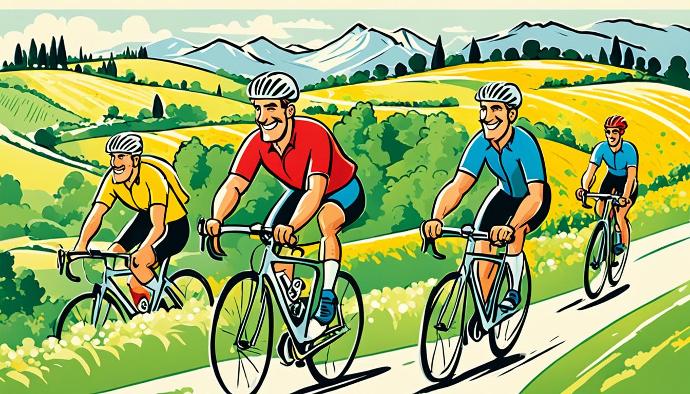
The data shows a complex picture for bike ridership italy. Some areas are growing, while others are not changing much. Knowing these trends is key for planning and making decisions9.
Cycle Usage Statistics in Italy
Italy's bicycle market has seen ups and downs in recent years. While e-bike sales and cycling tourism have grown, the number of people cycling is still lower than in countries like Denmark and the Netherlands10.
In 2023, Italy saw a 23% drop in bicycle sales compared to the year before10. This followed a 10% decrease in sales in 202210. But, e-bike sales in Italy grew by 5% in 202110. In 2020, Italy produced 213,000 e-bikes, a huge increase from the year before10.
Some cities in Italy, like Rome, don't have many cyclists. But places like Bolzano and Trento have more people riding bikes. From 2007 to 2014, more Italians started cycling as their main way to get around, going from 1% to 3%10. Still, Italy trails countries like Denmark and the Netherlands in cycling.
There's a link between more cyclists and fewer accidents, showing the "safety in numbers" effect11.
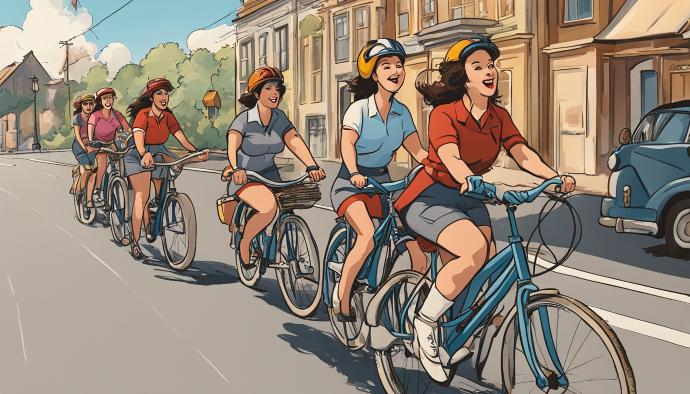
The Italian (e)-bike industry is facing supply chain problems, but these are expected to last until 202310. Yet, Italy is investing a lot in cycling, planning to spend 1.2 billion euros on it from 2022-202611. This includes building 1,235 kilometers of cycle paths for tourists and 565 kilometers for city cycling11.
These investments show Italy's effort to boost cycling and improve safety. They also support a national cycling strategy11.
Cycling Tourism in Italy | Key Statistics |
33 million people in Italy, which is 4.3% of total tourists, added cycling to their trips last year12. | 'Pure' cycle tourists, who specifically go on a cycling holiday, have more than doubled compared to pre-pandemic levels, reaching 9 million12. |
'Pure' cycle tourists generated a 1-billion-euro impact on the local economy12. | 37.8% of 'pure' cycling tourists in Italy are between 18 and 41 years old12. |
55.1% of 'pure' cycling tourists in Italy are men, while 44.9% are women12. | Almost half of cycling tourists in Italy visit Veneto, Trentino-Alto Adige, or Tuscany12. |
Only 21% of EuroVelo routes in Italy are developed, indicating potential for further growth in infrastructure12. | The second edition of the Cycling Tourism Fair in Bologna attracted 19,000 visitors in two days12. |
Italy is investing in cycling and sustainable transport, which could lead to more people cycling in the future111012.
Bicycle Infrastructure Development
In Italy, the growth of bike paths varies across regions and cities. Some cities like Milan and Bologna have made big strides in bike lanes. But, cities like Rome have been slower to adopt cyclist-friendly changes13. The goal is to have 32 km of bike paths per 100 km in big cities, but progress is not even13.
Research shows that bike lanes and their connections greatly affect how often people cycle14. Cities with better bike paths and networks see more people cycling15. Investing in bike infrastructure is key to boosting sustainable travel and active transport in Italy.
Bike Lane Networks and Expansions
From 2019 to 2022, Italy's bike market grew by 52%, hitting 3.2 billion euros in sales that year13. Yet, only 3.8% of daily trips are by bike, showing a big chance for growth15. In big cities, bike paths doubled from 2008 to 2015, but we need more to link them well15.
The Italian government plans to spend 1.154 billion euros on cycling over three years starting in 202213. This money will help grow bike lanes and make cities more bike-friendly.
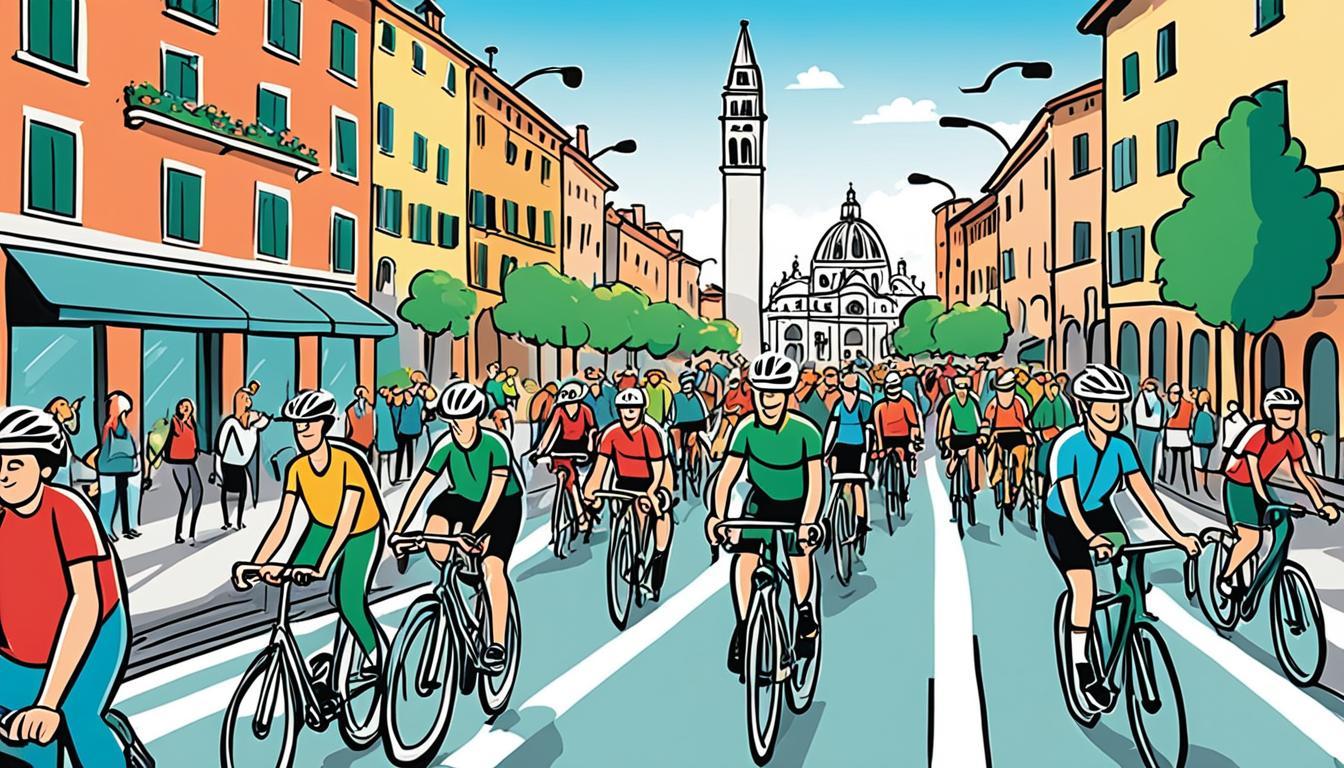
To boost cycling, Italy is looking at new laws in 2022. These include making helmets mandatory, registering bikes, and special insurance for cyclists13. With more paths and laws, Italy can become a better place for biking, encouraging more people to cycle131415.
Adoption of Bike-Sharing Programs
Bike-sharing programs are becoming more popular in Italy. They are now found in many cities. These systems help people use different kinds of transport and make cycling easier, especially in cities16.
Major Bike-Share Systems in Italy
The Parisian Vélib' system is a big bike-sharing scheme in Italy, starting in 2007. It has over 20,000 bikes and 1,800 stations, with 40,000 to 120,000 trips daily16. Other big ones include Bikemi in Milan, Byke in Rome, and Helbiz in many cities16.
User Demographics and Utilization Metrics
Italian bike-share programs attract many kinds of users, from tourists to regular commuters16. The market was worth $49.34 million in 2023 and is expected to grow to $68.73 million by 203016. Companies like Mobike, Jump, Bikemi, Byke, Helbiz, Bird, and Lime are leading the market16.
As bike-sharing grows in Italy, it's important to watch how people use it. This will help us see how it changes cycling and how people move around16. The market includes different bikes, ways to share, and who uses them16.
Bike-sharing in Italy shows a move towards greener and more flexible transport. It can cut down on pollution, ease traffic, and get people moving more. Bike-sharing is set to be a big part of Italy's future transport1718.
Cycling for Transportation and Commuting
Bicycles are becoming more popular in Italy, but we need more data on how people use them for getting around19. Some benefits of cycling is it is good for health and the environment, but how much people bike varies a lot in different cities. Cyclists often rely on energy gels and electrolyte supplements to maintain their stamina and hydration during long rides.
In Rome, only 0.6% of trips were by bike in 2012, showing biking isn't common for commuting19. But, cities like Copenhagen and Amsterdam have much higher bike use, over 30% in some areas20. We need better data to understand why and how to encourage more biking in Italy.
Bicycle Commuting Rates in Urban Centers
Looking at major cities in Italy, the picture is mixed19. Some cities are doing better than others in promoting biking. Rome has a lot of cars and people spend a lot of time driving, showing that biking isn't a big part of getting around yet19.
On the other hand, cities like Copenhagen and Amsterdam have a lot of people biking, with 49% in Copenhagen in 20181. These cities show what Italy could aim for with the right support for biking.
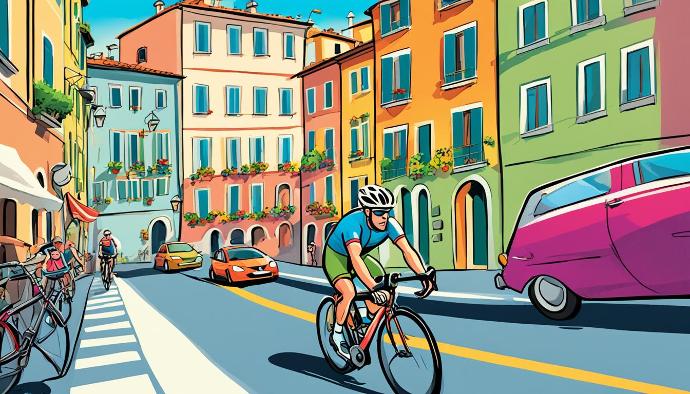
Italy is facing big challenges in how people move around cities, and understanding biking is key to making things better19. By looking at what works in other cities, Italy can make biking a better choice for getting around19201.
Recreational and Tourism Cycling Trends
Italy is not just about biking for transport; it's also a hotspot for fun and tourism cycling. Visitors on bikes tend to spend more on local goods than car tourists, boosting rural economies21. On average, cyclists spend £25 a day, while car tourists only spend £7.3021. This shows that cycle tourism could really help Italy's rural areas.
Cycling tourism attracts a wide range of people, like young adults, the elderly, and families21. There are four main types of cycling: Road Cycling, Mountain Biking, Family Cycling, and Touring/Expedition21. Men aged 18 to 49 love road cycling for exercise and nature21. They usually ride between 15 to 25 km, but some go up to 200 km21.
The COVID-19 pandemic has made more people want to cycle in Italy, seeking nature and outdoor fun21. Young cyclists like simple trips, while older ones look for better amenities21. Cycle tourism lets people enjoy local spots, explore off-road, and use e-bikes for tours21.
Cycle tourism is key to Italy's green tourism, thanks to partnerships between businesses and governments22. Tourists pay more for experiences that include beautiful views, local food, and culture22. The different tastes and habits of cyclists help shape cycle tourism in Italy22.
The cycling sector in Italy is huge, making €12 billion a year23. But, we don't know much about recreational cycling and tourism in Italy. More data could help officials and local governments make the most of this growing market.
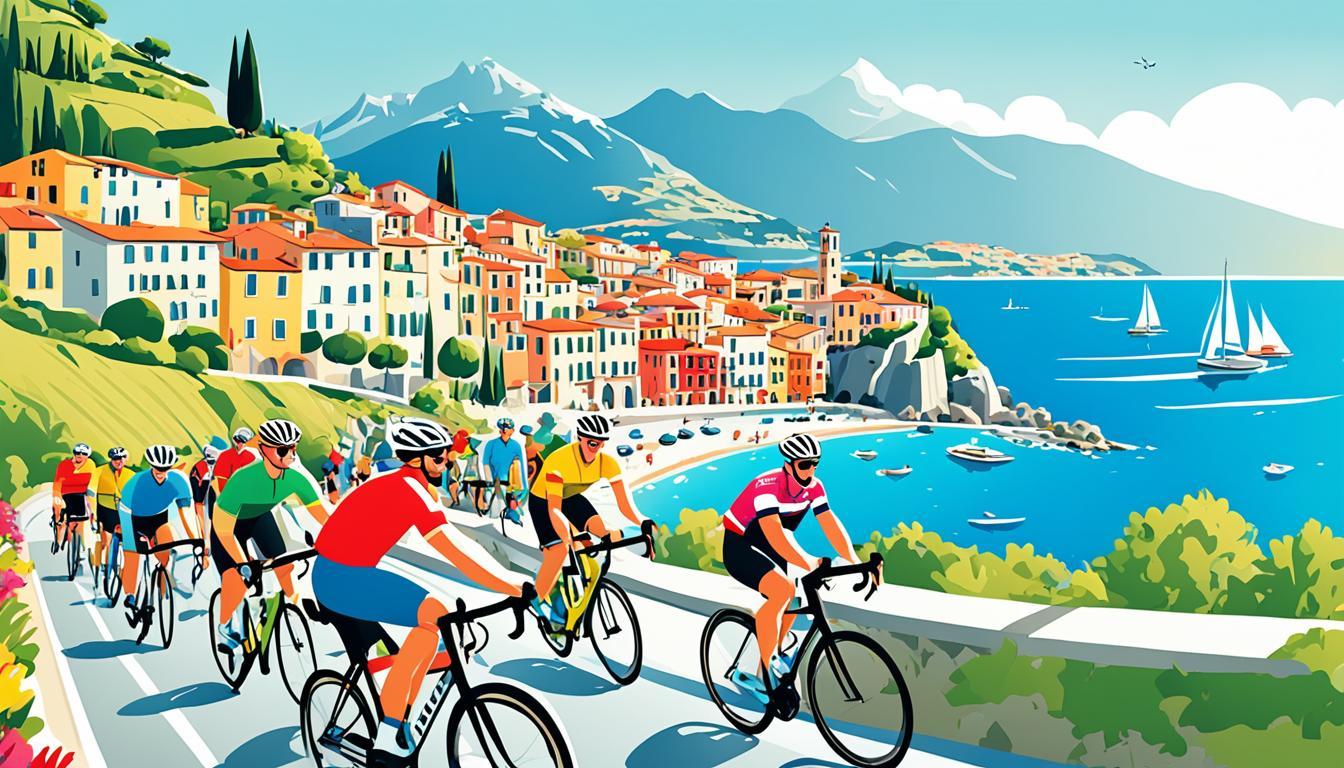
Environmental Impact of Cycling in Italy
Cycling in Italy is a big step towards a greener future. It's much better for the environment than driving a car. Bicycles only produce 21 g CO2 per mile, while cars emit 271 g CO224. If a cyclist rides 8 km to work four days a week, they'll save 380 liters of gasoline and 750 kg of CO2 emissions24.
Carbon Emissions Reductions
More people cycling can help Italy meet its climate goals. It cuts down on carbon emissions and reduces traffic jams, which also lowers emissions25. If 20% of short car trips in cities like Milwaukee and Madison were by bike, it would cut 57,405 tons of carbon dioxide emissions. That's worth $1.2 million25.
Air Quality Benefits
Cycling also means cleaner air in cities by cutting down on tailpipe emissions. It's healthier than driving, even in polluted areas24. Plus, having good bike paths leads to more people cycling, which is good for the planet24.
Italy is focusing on green mobility, and cycling is key. By using cycling more, the country can reach its green goals and make life better for everyone23.
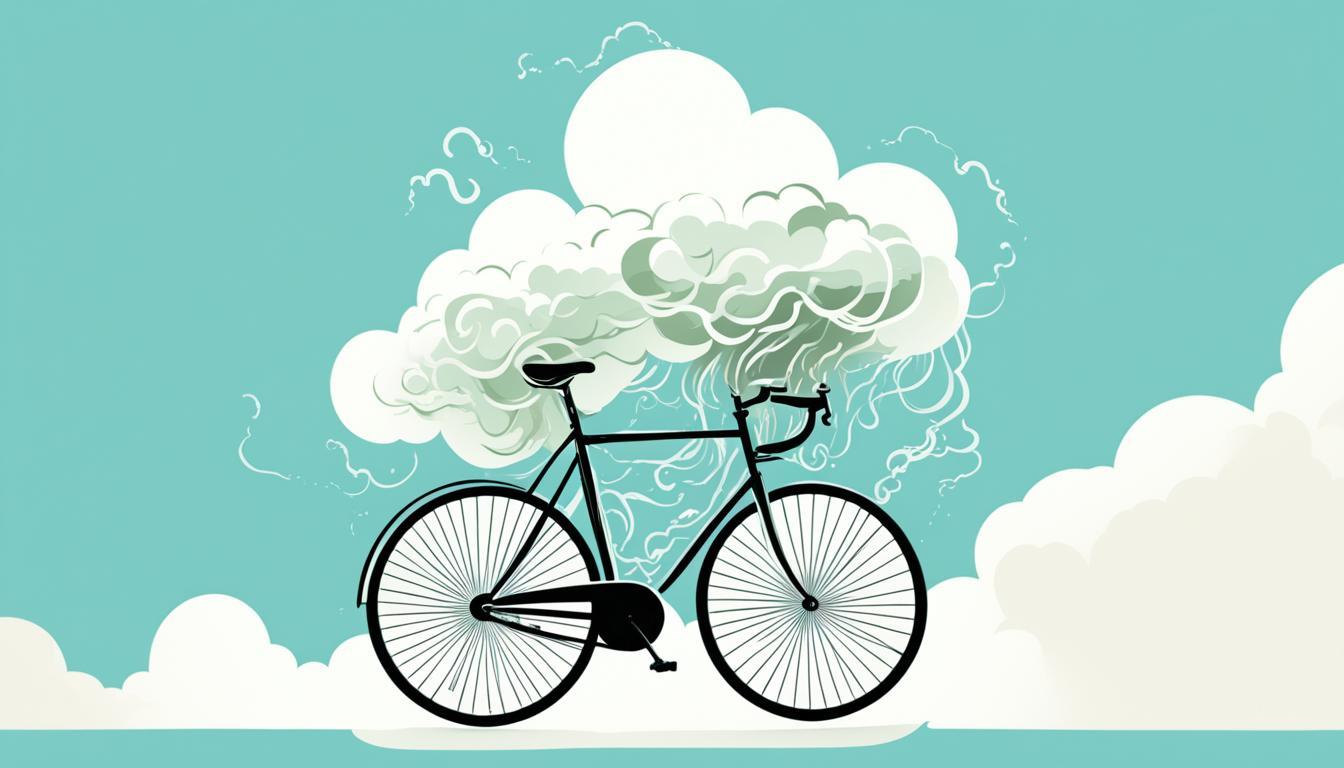
Mode of Transportation | Carbon Emissions (g CO2/passenger/km) |
Bicycle | 21 |
Electric-assist Bicycle | 22 |
Passenger Car | 271 |
The table shows how much less carbon cycling produces than driving. This makes cycling a top choice for eco-friendly mobility italy, green transportation italy, and sustainable mobility italy25.
Safety Statistics and Cycling Advocacy
Cycle safety is a big concern in Italy. The number of cyclists and cyclist casualties seem to go in opposite directions. This means more cyclists can make the roads safer for everyone26. Yet, Italian cities still need to do better for cyclist safety.
In Australia, drivers gave cyclists wearing helmets more space, and helmet laws made fewer people cycle27. In Italy, groups are pushing for better bike lanes, laws, and education to make cycling safer. This could get more people to cycle.
Cyclist Fatality and Injury Data
More cyclists are getting killed in traffic, showing cycling is getting more popular in Italy26. A meeting in Paris brought together experts from 16 countries to talk about cycling safety26. They discussed how often and how badly cyclists get hurt, but many injuries go unreported26.
Cycling Promotion Campaigns
Groups in Italy are fighting for better bike safety and more cycling. Paris's Mayor Anne Hidalgo plans to teach 800,000 kids about biking by 202728. She also wants to add 20 million secure bike parking spots in the city28. The French government is backing a plan to boost the cycling economy with nine main proposals28.
These efforts show cycling groups and officials are serious about making cycling safer and more popular in Italy and Europe. They're focusing on better bike paths, teaching, and laws to make cycling safer for everyone.
Conclusion
The data on cycling in Italy shows a complex picture of the country's cycling habits29. While cities like Rome have low cycling rates, other areas see more people on bikes29. From 2007 to 2014, more Italians started cycling as their main way to get around, but they still trail countries like Denmark and the Netherlands29.
Italy has a lot of room to grow in using bikes for green transport30. Switching from cars to bikes for short trips could cut down a lot of carbon emissions. These trips make up 40% of vehicle emissions30. Plus, biking is linked to fewer health problems like heart disease, diabetes, and some cancers30.
To boost cycling in Italy, we need to invest in bike paths, bike-sharing, and campaigns31. Looking at countries like the Netherlands, where cycling is common, can help Italy improve its cycling culture31. This could lead to more people biking and bring health,economic, and environmental gains31.
References:
Cycling facts and figures -https://ecf.com/resources/cycling-facts-and-figures
Bicycle Traffic in 2023: A Plateau for Cycling? - Eco-Counter -https://www.eco-counter.com/blog/bicycle-traffic-in-2023-a-plateau-for-cycling/
Cycling in Europe: Where is bicycle use most and least common? -https://www.euronews.com/next/2023/09/19/cycling-in-europe-which-countries-and-cities-are-the-most-and-least-bicycle-friendly
Italy E-bike Market Size & Share Analysis - Industry Research Report - Growth Trends -https://www.mordorintelligence.com/industry-reports/italy-e-bike-market
Bike Economy: export, Made in Italy and sustainable mobility -https://musmobility.com/en/bike-economy-export-made-in-italy/
Active mobility in an Italian city: Mode choice determinants and attitudes before and during the Covid-19 emergency -https://www.sciencedirect.com/science/article/abs/pii/S0739885921000032
Shared mobility in Italy in 2022 -https://blog.fluctuo.com/shared-mobility-in-italy-in-2023/
Italian shared micro-mobility is growing fast! — Qucit -https://qucit.com/en/news/italian-shared-micro-mobility-is-growing-fast
Analysis of bicycle traffic in Europe - Q1 2022 - Eco-Counter -https://www.eco-counter.com/blog/analysis-of-bicycle-traffic-in-europe-q1-2022/
Market Reports: Italy - Bike Europe -https://www.bike-eu.com/market-reports-italy
The importance of National Cycling Strategies: Italy implements new General Plan of Cycling Mobility -https://ecf.com/news-and-events/news/importance-national-cycling-strategies-italy-implements-new-general-plan
Italy, a fast-growing cycling tourism destination -https://pro.eurovelo.com/news/2023-05-03_italy-a-fast-growing-cycling-tourism-destination
What's the forecast for the Italian bicycle market in 2023? -https://velco.tech/en/the-italian-bicycle-market/
Can Italy make room for its two-wheeled road users? -https://www.equaltimes.org/can-italy-make-room-for-its-two
Why don't Italians cycle to work? An experimental analysis -https://www.sciencedirect.com/science/article/abs/pii/S2213624X21000079
Italy Bike Sharing Market by Bike Type, Sharing System, and User Type: Opportunity Analysis and Industry Forecast, 2024–2030 -https://www.linkedin.com/pulse/italy-bike-sharing-market-type-system-user-opportunity-zndle
Bike-Sharing Adoption in Cross-National Contexts: An Empirical Research on the Factors Affecting Users’ Intentions -https://www.mdpi.com/2071-1050/14/6/3208
AM_Factsheet_Rome_WP2 -https://www.pastaproject.eu/fileadmin/editor-upload/sitecontent/Publications/documents/AM_Factsheet_Rome_WP2.pdf
Top 10 Countries with the Highest Bicycle Usage -https://rankingroyals.com/infographics/top-10-countries-with-the-highest-bicycle-usage/
The European market potential for cycling tourism -https://www.cbi.eu/market-information/tourism/cycling-tourism/market-potential
Cycle Tourism as a Driver for the Sustainable Development of Little-Known or Remote Territories: The Experience of the Apennine Regions of Northern Italy -https://www.mdpi.com/2071-1050/10/6/1863
Italy discovers the Bike Economy. And loves it. -https://ecf.com/news-and-events/news/italy-discovers-bike-economy-and-loves-it-0
Cycling for a Sustainable Touristic Mobility: A Preliminary Study in an Urban Area of Italy -https://www.ncbi.nlm.nih.gov/pmc/articles/PMC8708176/
Environmental Statistics | PeopleForBikes -https://www.peopleforbikes.org/statistics/environmental
PDF -https://www.itf-oecd.org/sites/default/files/docs/cycling-safety-roundtable-summary_0.pdf
Safety Statistics | PeopleForBikes -https://www.peopleforbikes.org/statistics/safety
Best practice in boosting cycling modal share and creating safe, sustainable cities -https://urban-mobility-observatory.transport.ec.europa.eu/resources/case-studies/best-practice-boosting-cycling-modal-share-and-creating-safe-sustainable-cities_en
Unraveling population trends in Italy (1921–2021) with spatial econometrics - Scientific Reports -https://www.nature.com/articles/s41598-023-46906-2
Cycling and walking can help reduce physical inactivity and air pollution, save lives and mitigate climate change -https://www.who.int/azerbaijan/news/item/07-06-2022-cycling-and-walking-can-help-reduce-physical-inactivity-and-air-pollution--save-lives-and-mitigate-climate-change
Cycling like the Dutch would slash the world’s carbon footprint -https://www.euronews.com/green/2023/06/03/on-your-bike-if-we-all-cycled-like-the-dutch-global-emissions-drop-nearly-700-million-tonn






